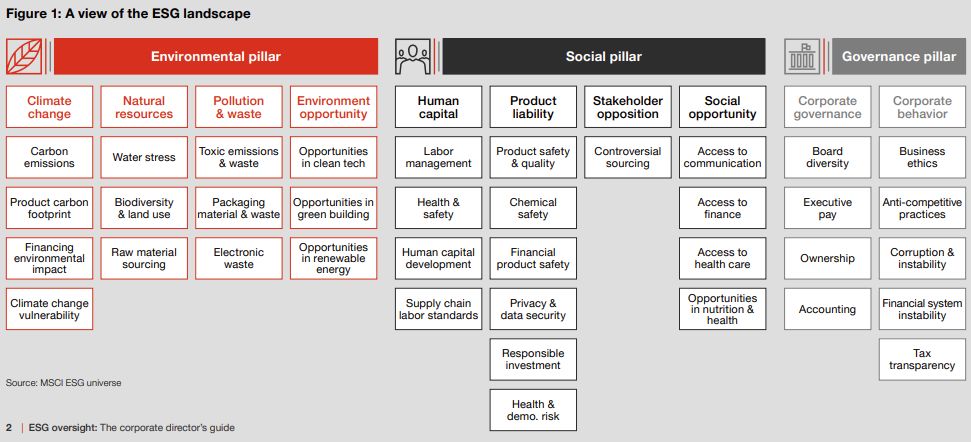Art Stewart, MPM
Managing Partner
May 25, 2021.
ESG is the new embodiment of the fuller arc of Corporate Integrity practice.
From the old "CSR" we move into the reborn, broader ESG premised upon material impact, fiduciary accountability, and operational transformation. The overdue capitulation to financial responsibility in today's mature ESG practices can be largely traced to earlier innovations of the movement - such as SRI (Socially Responsible Investing), impact investing, strategic philanthropy, and purpose informed funds and trusts. The family enterprise sector along with their family offices have also played a role from having historically been guided by investment thesis aligned with family legacy values.
 Short memories leave out the history of this journey; it didn’t happen overnight. Indeed, ESG is now becoming embedded in the due diligence process and the analytical mindset of the investor, auditor, CFO, risk manager class. “CSR”, “sustainability”, TBL (triple bottom line) and all the other axioms are insufficient to convey the changed place now held for ESG in corporate lifecycle management and value creation. Welcome to a new era of non-negotiable values and standards for how both public and private companies operate with greater integrity.
Short memories leave out the history of this journey; it didn’t happen overnight. Indeed, ESG is now becoming embedded in the due diligence process and the analytical mindset of the investor, auditor, CFO, risk manager class. “CSR”, “sustainability”, TBL (triple bottom line) and all the other axioms are insufficient to convey the changed place now held for ESG in corporate lifecycle management and value creation. Welcome to a new era of non-negotiable values and standards for how both public and private companies operate with greater integrity.
Sometimes big changes can arrive quietly, gaining momentum out of emerging consciousness and then suddenly triggering a ‘movement.’ So now we watch with both skepticism and hopeful assurance for more indications of a rising consciousness by markets, market institutions, corporate leadership, and trusted advisory professionals. Will these economic forces line up with the many global frameworks and standards communities to agree on more synergistic approaches to environmental, social, and governance transformation?
There’s a lot of smoke and ESG noise out there. No wonder CEOs and their C-suite deputies – as well as their Boards, advisors, investors-shareholders, and stakeholders - are clamoring to make sense of it for their unique context.  The big reveal is that you don't need to bite off more than you need to chew. ESG is not one size fits all. It is also not limited to publicly-traded entities.
The big reveal is that you don't need to bite off more than you need to chew. ESG is not one size fits all. It is also not limited to publicly-traded entities.
If any one factor is immediately felt the most in this ESG wave, it is the advanced technology-driven metrics and analytical capabilities that are changing what’s required for competitive engagement. It’s now expected that you increase conformance to any number of transparency and accountability functions and that requires new investments in smart people, advanced technology, and operational efficiencies.
It No Longer Matters Whether You're Public or Private
It's a myth to believe that only publicly-traded companies need to attend to ESG matters. The standards and expectations that have been perfected by trial and error in the public markets are filtering through to large and midcap private companies and family enterprises. Increasingly these firms, their C-suite leaders, and Boards are finding good business reasons to establish their custom ESG platform as a means to achieving a higher state of durable competitiveness.
For more companies, performance on ESG indicators is becoming an innate filter through which assessments are made about them for everything from supplying a leading sourcing company customer to aligning systems and processes in a JV, acquisition or merger. ESG outcomes are increasingly core to company valuation calculations and even create premium value-adds when based on hard assets.
 As the risk landscape broadens to include new insurance liabilities, culture and human capital ecosystems, DEI&B challenges, Board evolution, and the convergence of politics-public policy and business, having a proportionate ESG operations strategy will be essential in order to be adequately poised for successfully winning opportunities over the horizon with less resistance and greater market consent.
As the risk landscape broadens to include new insurance liabilities, culture and human capital ecosystems, DEI&B challenges, Board evolution, and the convergence of politics-public policy and business, having a proportionate ESG operations strategy will be essential in order to be adequately poised for successfully winning opportunities over the horizon with less resistance and greater market consent.
It is also worth noting that markets and regulators are under greater pressure and scrutiny themselves to measure the real materiality impact of any responsibility inputs on direct top and bottom-line performance – whether revenue, calculated and validated material risk reductions, operational and in-market innovations, resilience building initiatives or a deepening customer engagement lifecycle.
So why mention all of this?
Because the noise of the market drowns out what’s really going on: ESG is broadening beyond its domain of origin in financial and investment markets while upholding its foundational premise that organizations must execute responsibility-compliant practices (inputs) that can be defensibly measured against their direct material impact on top and bottom-line performance.
What is old becomes new again.
This time it may actually prove to be different. A wave of Federal initiatives along with incentives from other sources is running concurrent with stepped up SEC activity to improve the very policing of standards compliance. There's a natural synchronization to these ESG matters globally now that has not been experienced before, suggesting to even the most skeptical that we may indeed be entering an historic period of real transformation. SIP



